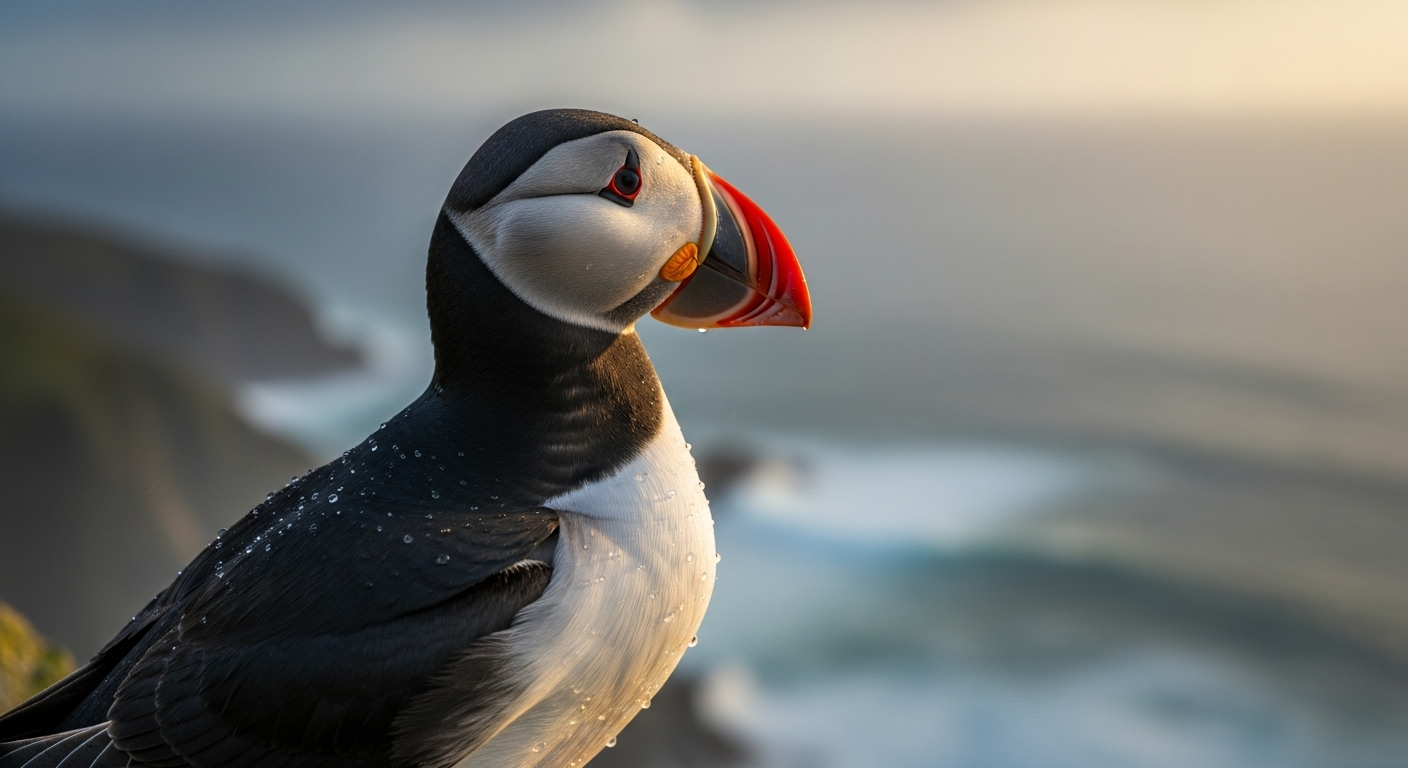Puffin Plumage: Nature's Colorful Clown Suits
The charismatic puffin, with its distinctive black and white feathers and vibrant beak, has long captivated the hearts of wildlife enthusiasts. But there's more to these charming seabirds than meets the eye. Dive into the fascinating world of puffin plumage, exploring how these avian marvels transform their appearance throughout the year and the crucial role their feathers play in survival.

The Seasonal Wardrobe of Puffins
Puffins are masters of disguise, changing their appearance dramatically between breeding and non-breeding seasons. During the breeding months, typically from April to August, puffins sport their iconic black and white plumage, complete with their famously colorful beaks. This striking attire serves as a visual cue for potential mates and helps puffins recognize members of their own species among the bustling seabird colonies.
As autumn approaches, puffins undergo a remarkable transformation. Their vibrant beaks and eye ornaments fade to a duller hue, and their face feathers turn grayish-white. This less conspicuous winter plumage helps puffins blend in with the ocean waves, providing crucial camouflage from predators during the harsh winter months spent at sea.
The Engineering Marvel of Puffin Feathers
Puffin feathers are a testament to nature’s ingenuity. These birds possess over 6,000 feathers, each serving a specific purpose. The outer layer of contour feathers is waterproof, allowing puffins to dive and swim effortlessly. Beneath this layer lies a thick coat of down feathers, providing insulation against the frigid waters of the North Atlantic and Pacific Oceans.
Perhaps most remarkable is the puffin’s ability to compress its feathers, reducing air pockets and allowing it to dive to depths of up to 60 meters. This adaptation enables puffins to chase after their preferred prey of small fish and sand eels, making them efficient underwater hunters.
The Annual Molt: A Vulnerable Time
Like many birds, puffins undergo an annual molt to replace worn-out feathers. However, puffins face a unique challenge during this process. Unlike most birds that lose and replace feathers gradually, puffins shed all their flight feathers simultaneously, rendering them flightless for several weeks.
This period of vulnerability occurs after the breeding season when puffins are already at sea. During this time, they rely heavily on their swimming abilities to evade predators and find food. The molt is a critical and energy-intensive process, requiring puffins to consume large quantities of fish to fuel feather regrowth.
Puffin Plumage and Climate Change
Recent studies have shown that climate change is having a significant impact on puffin populations, with their distinctive plumage serving as an indicator of environmental stress. Researchers have observed that puffins in warmer waters tend to have duller feathers and less vibrant beaks, likely due to reduced availability of carotenoid-rich prey fish.
These changes in plumage quality can have far-reaching consequences. Duller feathers may affect a puffin’s ability to attract mates, potentially leading to reduced breeding success. Additionally, lower-quality feathers might compromise the birds’ insulation and waterproofing capabilities, making it harder for them to survive in their harsh marine environment.
Conservation Efforts and Citizen Science
As concerns grow over declining puffin populations, scientists and conservationists are turning to innovative methods to study and protect these beloved seabirds. One such initiative is the use of citizen science projects that encourage bird watchers and nature enthusiasts to report puffin sightings and document plumage conditions.
These projects not only provide valuable data for researchers but also raise public awareness about the challenges facing puffins. By engaging the public in puffin conservation efforts, scientists hope to gather more comprehensive information about population trends and the impacts of climate change on these charismatic birds.
The Future of Puffin Plumage Research
As technology advances, so do the methods for studying puffin plumage. Researchers are now using high-resolution cameras and computer vision algorithms to analyze subtle changes in feather coloration and patterns. These techniques allow for non-invasive monitoring of puffin health and could provide early warnings of environmental stress on populations.
Additionally, genetic studies are shedding light on the hereditary aspects of puffin plumage, potentially revealing how these birds might adapt to changing environmental conditions in the future. By combining traditional field observations with cutting-edge technology, scientists are gaining a more comprehensive understanding of puffin plumage and its role in the species’ survival.
In conclusion, the colorful and dynamic plumage of puffins is far more than just a charming feature of these beloved seabirds. It is a complex and vital aspect of their biology, playing crucial roles in mate attraction, camouflage, and survival in harsh marine environments. As we continue to unravel the mysteries of puffin plumage, we gain not only a deeper appreciation for these remarkable creatures but also valuable insights into the health of our oceans and the impacts of climate change on marine ecosystems.





